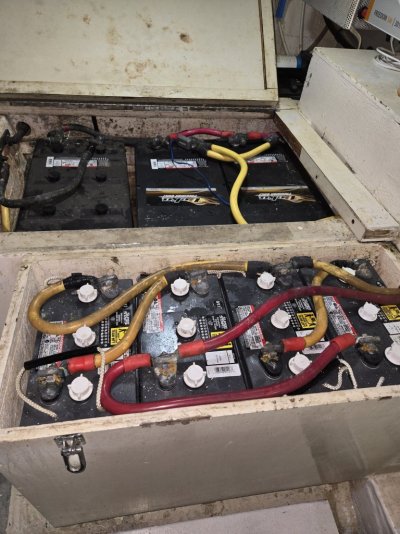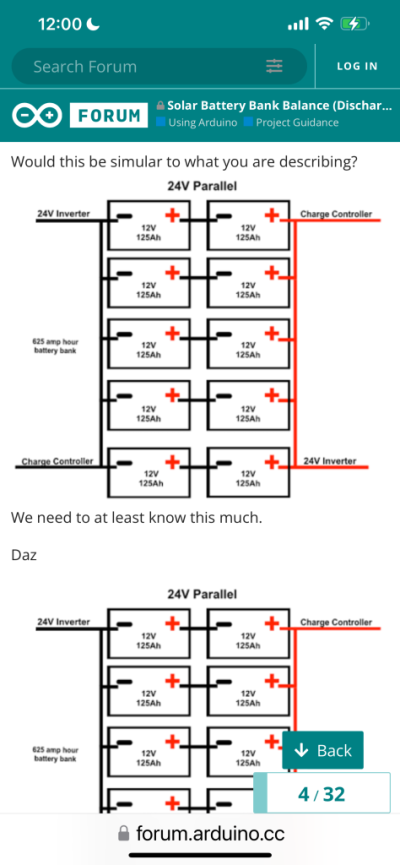Xfirepop
Veteran Member
- Joined
- Sep 10, 2022
- Messages
- 25
- Vessel Name
- C C Rider
- Vessel Make
- Gulfstar 44
Rookie captain here with a basic electrical question. The picture below shows my battery banks. I'm wondering which banks do what. The lower 8L16 bank is dead, 12 volts, thus the charger kicked off and won't bring them up. I already knew they were on their way out, just not this quick. Is this lower bank my starter batteries or are they the house, deep cycle, batteries? All 12 volt items on the boat are dead, not enough juice to run them.
My question is do I replace them with exactly the same or can I switch to a set of 31M batteries?
My question is do I replace them with exactly the same or can I switch to a set of 31M batteries?


